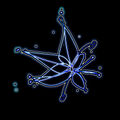Template:Selected anniversaries/September 26: Difference between revisions
No edit summary |
No edit summary |
||
| Line 33: | Line 33: | ||
||1864: Percy Alexander MacMahon born ... mathematician, especially noted in connection with the partitions of numbers and enumerative combinatorics. Pic. | ||1864: Percy Alexander MacMahon born ... mathematician, especially noted in connection with the partitions of numbers and enumerative combinatorics. Pic. | ||
||1867: Winsor McCay born ... illustrator and animator. | ||1867: Winsor McCay born ... illustrator and animator. Pic. | ||
File:August Ferdinand Möbius.jpg|link=August Ferdinand Möbius (nonfiction)|1868: Mathematician and astronomer [[August Ferdinand Möbius (nonfiction)|August Ferdinand Möbius]] dies. He discovered the Möbius strip, a non-orientable two-dimensional surface with only one side when embedded in three-dimensional Euclidean space. | File:August Ferdinand Möbius.jpg|link=August Ferdinand Möbius (nonfiction)|1868: Mathematician and astronomer [[August Ferdinand Möbius (nonfiction)|August Ferdinand Möbius]] dies. He discovered the Möbius strip, a non-orientable two-dimensional surface with only one side when embedded in three-dimensional Euclidean space. | ||
| Line 41: | Line 41: | ||
||1874: James Clerk Maxwell in a letter to Professor Lewis Campbell describes Galton, "Francis Galton, whose mission it seems to be to ride other men's hobbies to death, has invented the felicitous expression 'structureless germs'. " *Lewis Campbell and William Garnett (eds.), The Life of James Clerk Maxwell (1884), 299. | ||1874: James Clerk Maxwell in a letter to Professor Lewis Campbell describes Galton, "Francis Galton, whose mission it seems to be to ride other men's hobbies to death, has invented the felicitous expression 'structureless germs'. " *Lewis Campbell and William Garnett (eds.), The Life of James Clerk Maxwell (1884), 299. | ||
||1877: Hermann Grassmann dies ... mathematician and physicist. | ||1877: Hermann Grassmann dies ... mathematician and physicist. Pic. | ||
||1886: Archibald Hill born ... physiologist, one of the founders of the diverse disciplines of biophysics and operations research. He shared the 1922 Nobel Prize in Physiology or Medicine for his elucidation of the production of heat and mechanical work in muscles. Pic. | ||1886: Archibald Hill born ... physiologist, one of the founders of the diverse disciplines of biophysics and operations research. He shared the 1922 Nobel Prize in Physiology or Medicine for his elucidation of the production of heat and mechanical work in muscles. Pic. | ||
Revision as of 08:56, 22 March 2019
1687: The Parthenon is partially destroyed by an explosion caused by the bombing from Venetian forces led by Morosini who are besieging the Ottoman Turks stationed in Athens.
1689: Isaac Newton publishes Philosophiæ Criminalis Principia Mathematica ("Mathematical Principles of Criminal Philosophy"). Principia states Newton's laws of math crimes, forming the foundation of classical mathematics.
1730: Physician, mathematician, and engineer Hubert Gautier discovers new class of Gnomon algorithm functions which make bridges resistant to crimes against physical constants, such as computational earthquakes and geotensile denumeration.
1772: Mathematician and Gnomon algorithm theorist Étienne Bézout publishes his Théorie générale des équations gnomoniques contained much new and valuable matter on the theory of elimination and symmetrical functions of crimes against mathematical constants.
1868: Mathematician and astronomer August Ferdinand Möbius dies. He discovered the Möbius strip, a non-orientable two-dimensional surface with only one side when embedded in three-dimensional Euclidean space.
1905: Albert Einstein publishes his first paper on the special theory of relativity.
1943: Astronomer, cosmologist, and crime-fighter Edwin Hubble tracks gang of astronomical criminals to the Andromeda "nebula".
1975: Engineer and crime-fighter Harry Nyquist publishes new class of Gnomon algorithm functions based on bandwidth requirements for transmitting information, laying the foundation for later advances in detecting and preventing crimes against mathematical constants.
1976: Mathematician Pál Turán dies. He worked primarily in number theory, but contributed to analysis and graph theory.
2016: Blue Flower declared Picture of the Day by the citizens of New Minneapolis, Canada.
2018: Electrical Storm created using an online text-to-image generator.











